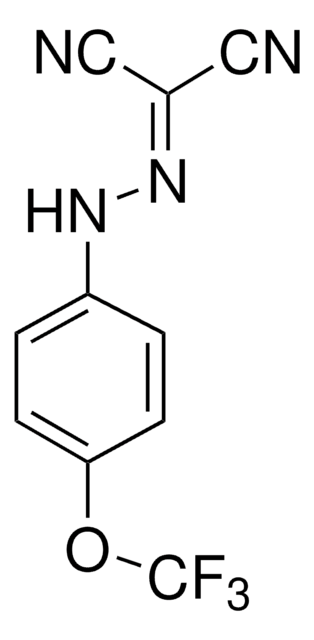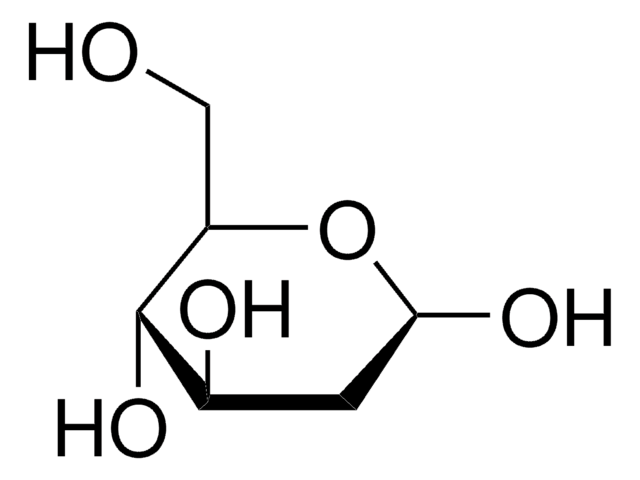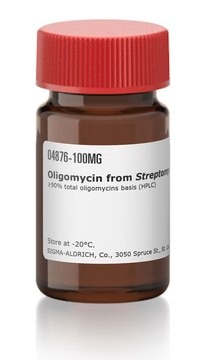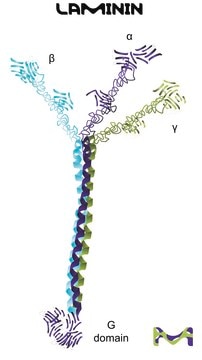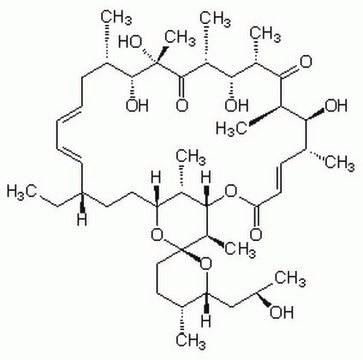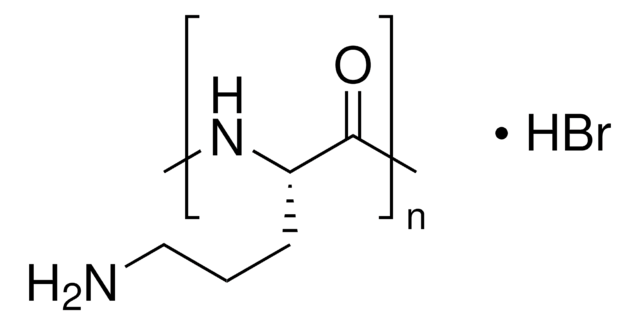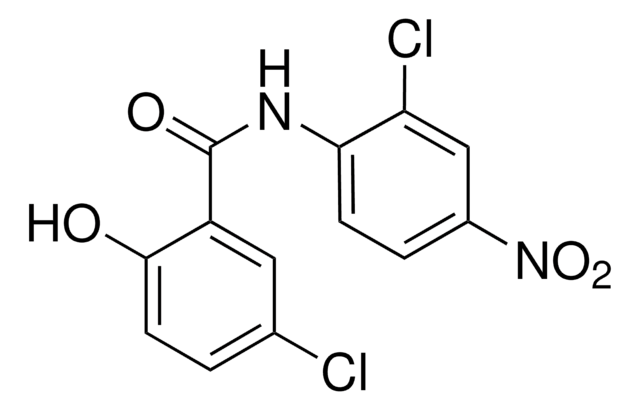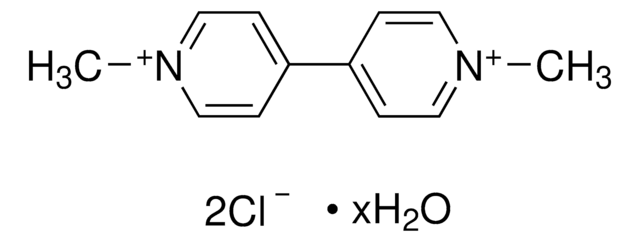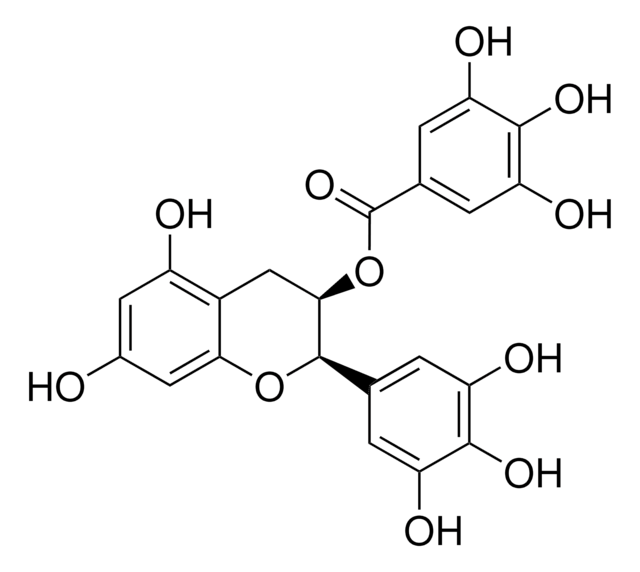SML1760
BAM15
≥98% (HPLC)
Synonym(s):
BAM 15, N5,N6-bis(2-Fluorophenyl)[1,2,5]oxadiazolo[3,4-b]pyrazine-5,6-diamine
Sign Into View Organizational & Contract Pricing
All Photos(1)
About This Item
Empirical Formula (Hill Notation):
C16H10F2N6O
CAS Number:
Molecular Weight:
340.29
MDL number:
UNSPSC Code:
12352200
Recommended Products
Quality Level
assay
≥98% (HPLC)
form
powder
color
white to beige
solubility
DMSO: 20 mg/mL, clear
storage temp.
−20°C
SMILES string
FC(C=CC=C1)=C1NC2=NC3=NON=C3N=C2NC4=CC=CC=C4F
Biochem/physiol Actions
BAM15 increases mitochondrial respiration rate and is also found to be less cytotoxic compared to other protonophore uncouplers such as carbonyl cyanide p-trifluoromethoxyphenylhydrazone. Hindered oncogenic MAPK (mitogen-activated protein kinase ) signaling leads to BAM15 induced mitochondrial apoptotic pathway activation.
BAM15 is a cell penetrant and potent uncoupler of oxidative phosphorylation in mitochondria that that does not depolarizes the plasma membrane. BAM15 protects mice from acute renal ischemic-reperfusion injury.
hcodes
pcodes
Hazard Classifications
Aquatic Chronic 4
Storage Class
11 - Combustible Solids
wgk_germany
WGK 3
flash_point_f
Not applicable
flash_point_c
Not applicable
Certificates of Analysis (COA)
Search for Certificates of Analysis (COA) by entering the products Lot/Batch Number. Lot and Batch Numbers can be found on a product’s label following the words ‘Lot’ or ‘Batch’.
Already Own This Product?
Find documentation for the products that you have recently purchased in the Document Library.
Customers Also Viewed
Dual suppression of inner and outer mitochondrial membrane functions augments apoptotic responses to oncogenic MAPK inhibition.
Serasinghe M N, et al.
Cell Death & Disease, 9(2), 29-29 (2018)
Brandon M Kenwood et al.
Molecular metabolism, 3(2), 114-123 (2014-03-19)
Dysregulation of oxidative phosphorylation is associated with increased mitochondrial reactive oxygen species production and some of the most prevalent human diseases including obesity, cancer, diabetes, neurodegeneration, and heart disease. Chemical 'mitochondrial uncouplers' are lipophilic weak acids that transport protons into
Brandon M Kenwood et al.
Bioorganic & medicinal chemistry letters, 25(21), 4858-4861 (2015-06-30)
Chemical mitochondrial uncouplers are lipophilic weak acids that transport protons into the mitochondrial matrix via a pathway that is independent of ATP synthase, thereby uncoupling nutrient oxidation from ATP production. These uncouplers have potential for the treatment of diseases such
Identification of a novel mitochondrial uncoupler that does not depolarize the plasma membrane.
Kenwood B M, et al.
Molecular Metabolism, 3(2), 114-123 (2014)
Keshav Kooragayala et al.
Investigative ophthalmology & visual science, 56(13), 8428-8436 (2016-01-10)
Cell death in neurodegeneration occurs at the convergence of diverse metabolic pathways. In the retina, a common underlying mechanism involves mitochondrial dysfunction since photoreceptor homeostasis and survival are highly susceptible to altered aerobic energy metabolism. We sought to develop an
Our team of scientists has experience in all areas of research including Life Science, Material Science, Chemical Synthesis, Chromatography, Analytical and many others.
Contact Technical Service